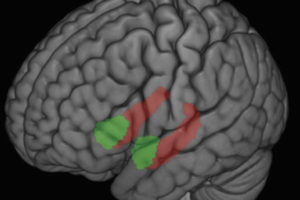We can feel stress in the body through common sensations: sweaty palms, racing heart and shallow breathing.
Some people cope with signs of stress in their lives by ignoring it or not realizing they are stressed. What if the key to well-being during stressful periods in our lives is syncing our physical and mental experiences of stress?
For the first time, a study from researchers at the Center for Healthy Minds published in Psychological Science suggests that people whose reported stress levels aligned more with their heart rate — called “stress-heart rate coherence”— also had higher levels of psychological well-being and lower levels of inflammation.

“This study suggests that it’s good to tune into your emotions and your body because it seems like the more those two things track together, the better off you are,” says Sasha Sommerfeldt, a graduate student at the Center and lead researcher on the project. “In other words, it’s not just whether someone experiences more stress or less stress, or whether their heart rate increases a lot or a little under stress. Rather, it is a person’s awareness of his or her stress levels and how consistent that is with heart rate that is linked to psychological and physical well-being.”
The team analyzed data from 1,065 participants in the Midlife in the United States (MIDUS) study, a longitudinal effort looking at well-being as adults age. Participants completed a series of stressful computer tasks, including a mental math task and a color identification task.
Before, during and after the tasks, researchers measured participants’ heart rate and asked them to rate their stress on a scale of one to 10 throughout the study.
After the participants completed the stress tests, researchers compared each person’s heart rate to the stress levels they reported — a measure called “stress-heart rate coherence”— and found that some people’s stress levels aligned with their heart rate better than others.
To examine the link between stress-heart rate coherence and people’s emotional well-being, researchers used psychological questionnaires focused on well-being, depression, anxiety and coping as well as blood samples measuring inflammation markers. Researchers found that people with greater stress-heart rate coherence had fewer symptoms of anxiety and depression, greater overall psychological well-being and lower levels of inflammation.
“The data support the potentially beneficial role of awareness in psychological well-being and physical health. And since we know that awareness can be enhanced through training, it raises the possibility that stress-heart rate coherence can be learned.”
Sommerfeldt says it’s unclear which comes first: good stress regulation or high stress-heart rate coherence.
“If people can recognize that they’re stressed and have a good relationship between their bodies and stress levels, then maybe it’s less likely that their stress will spill over and affect their mood and behavior,” says Sommerfeldt. “At the same time, if you have higher levels of emotional well-being, then you’re probably better at regulating your emotions. For example, you might say, ‘Yes, I’m stressed, but I know what to do with it and I can accept my stress.’ You use less denial in coping with it.”
Sommerfeldt says teaching coherence could begin with helping a person recognize their emotions, which might be an important part of the therapeutic process. Future research may explore whether coherence might be enhanced by interventions or practices like mindfulness or cognitive behavioral therapy (CBT). She says that for now researchers do not know whether these findings can be applied to other emotions, since the team focused only on stress.
Richard Davidson, the senior author of the article and director of the Center for Healthy Minds, is excited about these new findings.
“The data support the potentially beneficial role of awareness in psychological well-being and physical health,” Davidson says. “And since we know that awareness can be enhanced through training, it raises the possibility that stress-heart rate coherence can be learned.”
This work was supported by the John D. and Catherine T. MacArthur Foundation Research Network, the National Institute on Aging (P01-AG020166, U19-AG051426), the NIH National Center for Advancing Translational Sciences (NCATS) Clinical and Translational Science Award (CTSA) program (UL1TR001409 [Georgetown], UL1TR001881 [UCLA], 1UL1RR025011 [UW]). Sommerfeldt was also supported by a University of Wisconsin – Madison University Fellowship, and a Pre-Doctoral Fellowship through the Training Program in Emotion Research (NIH T32MH018931-28).
-Brita Larson






